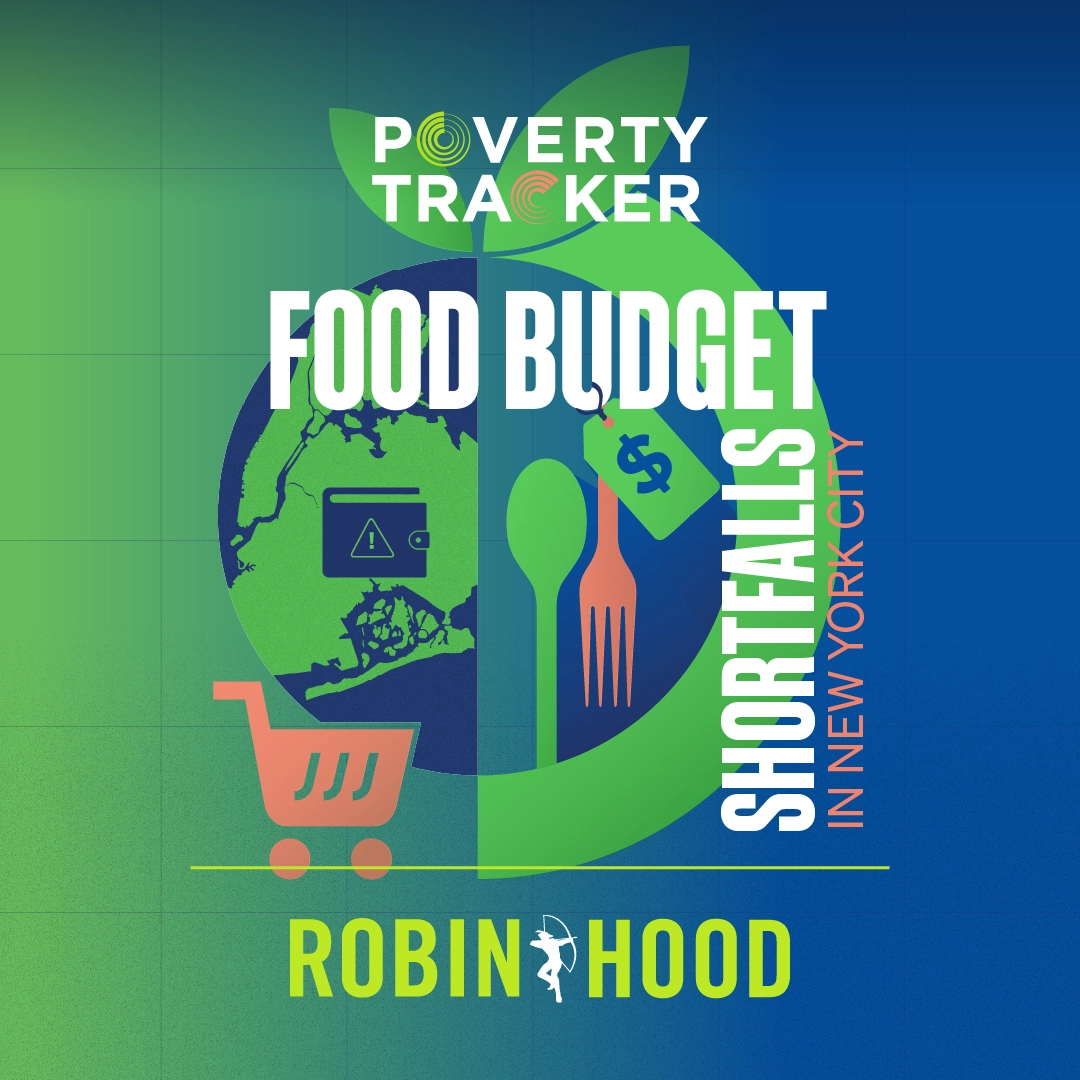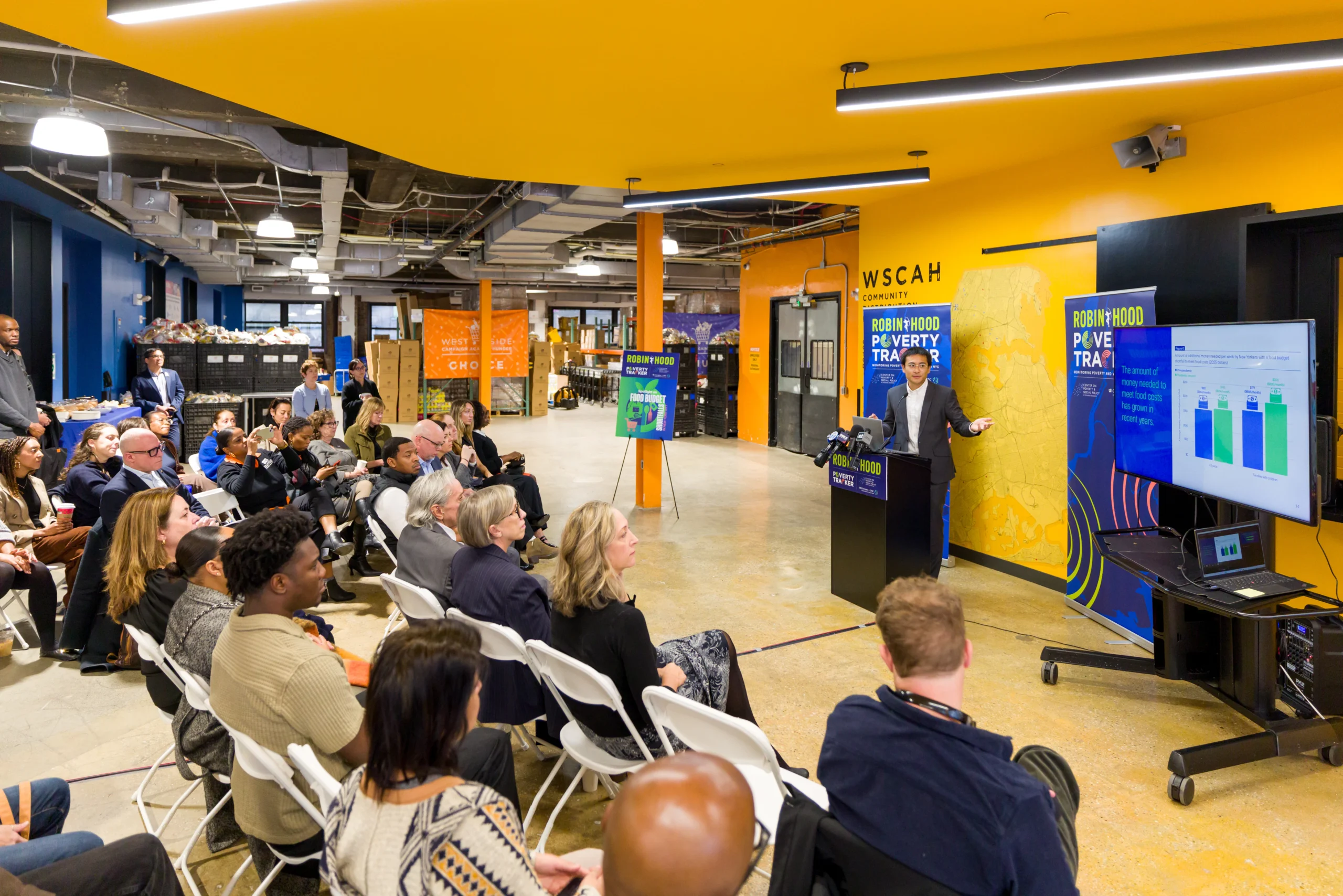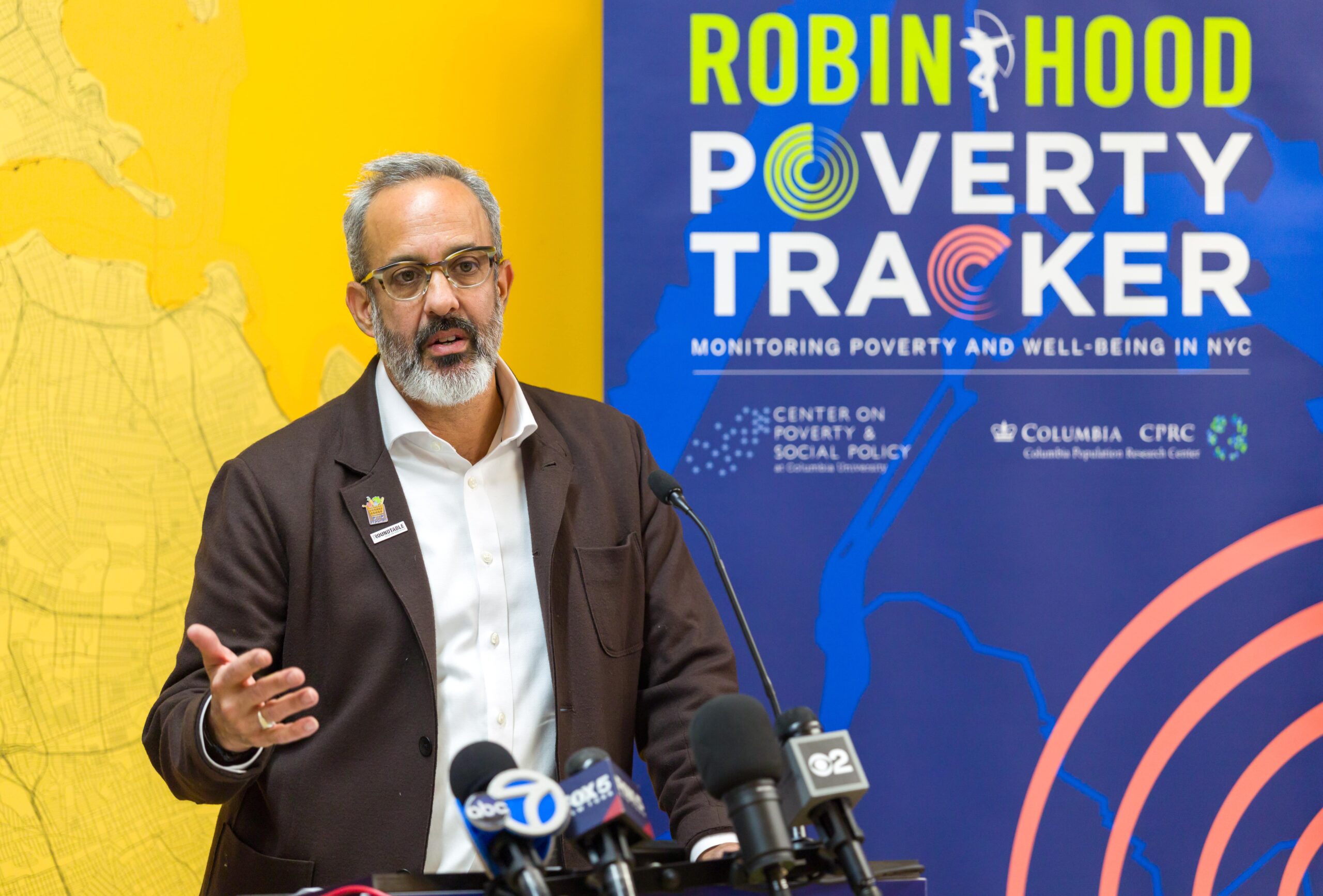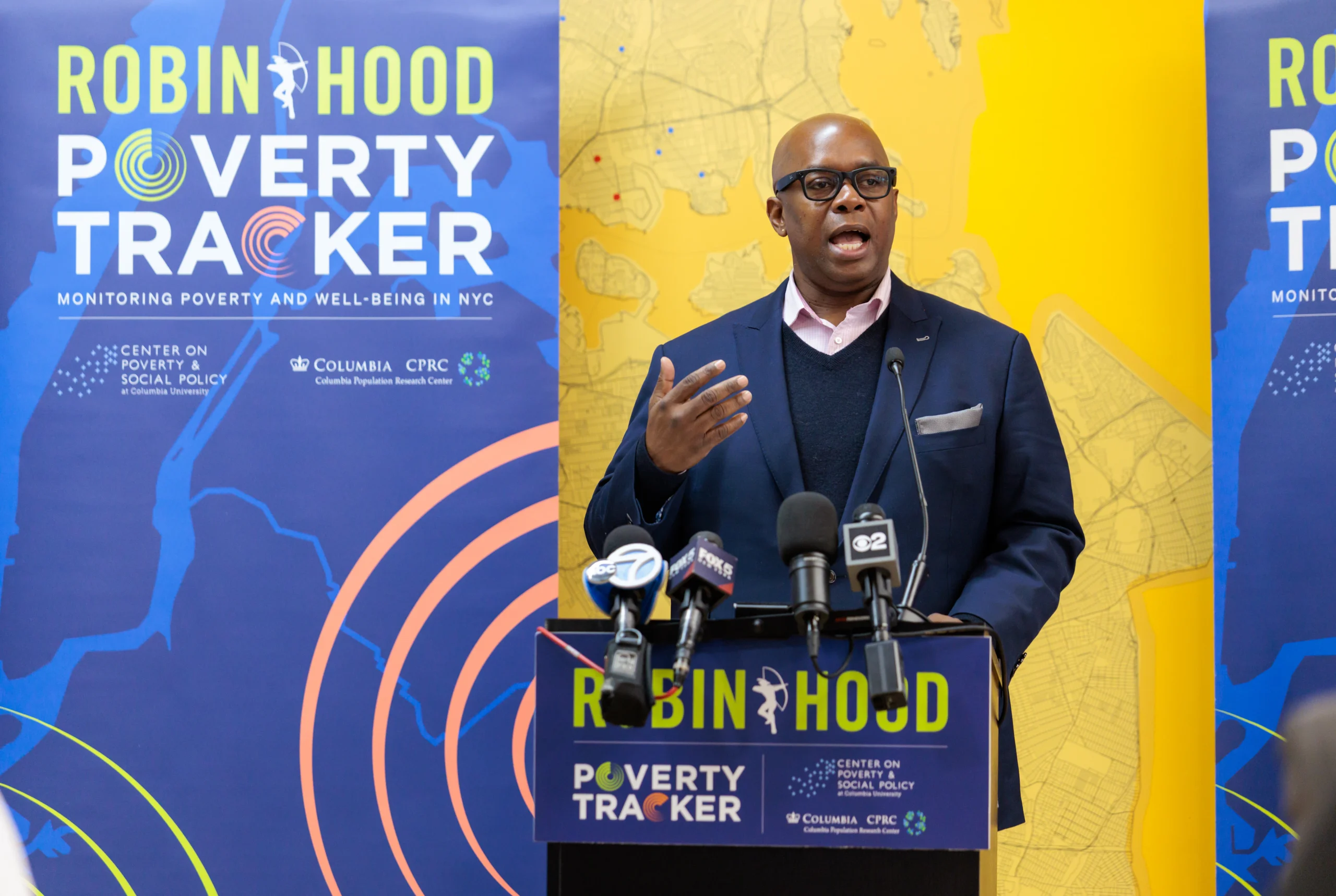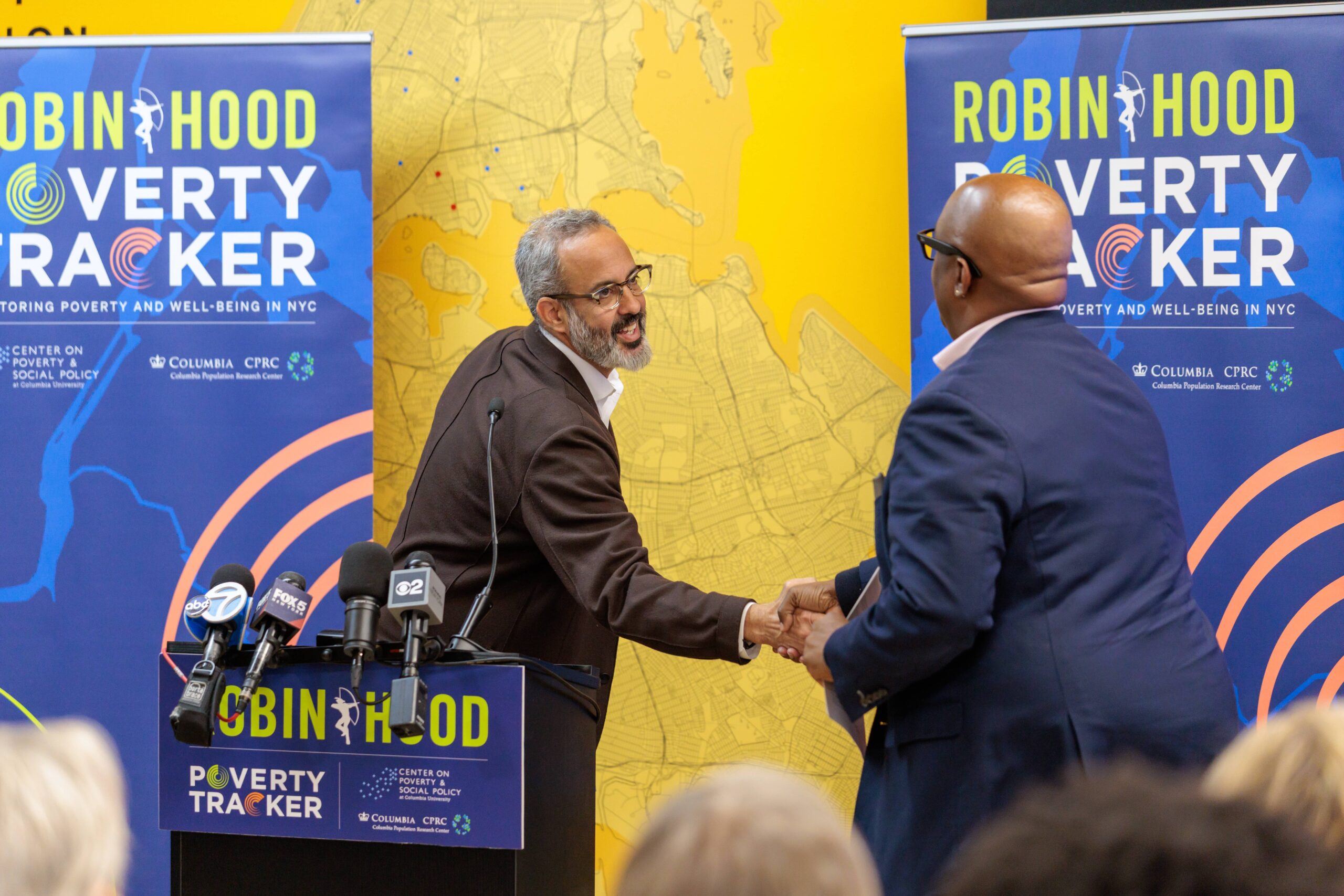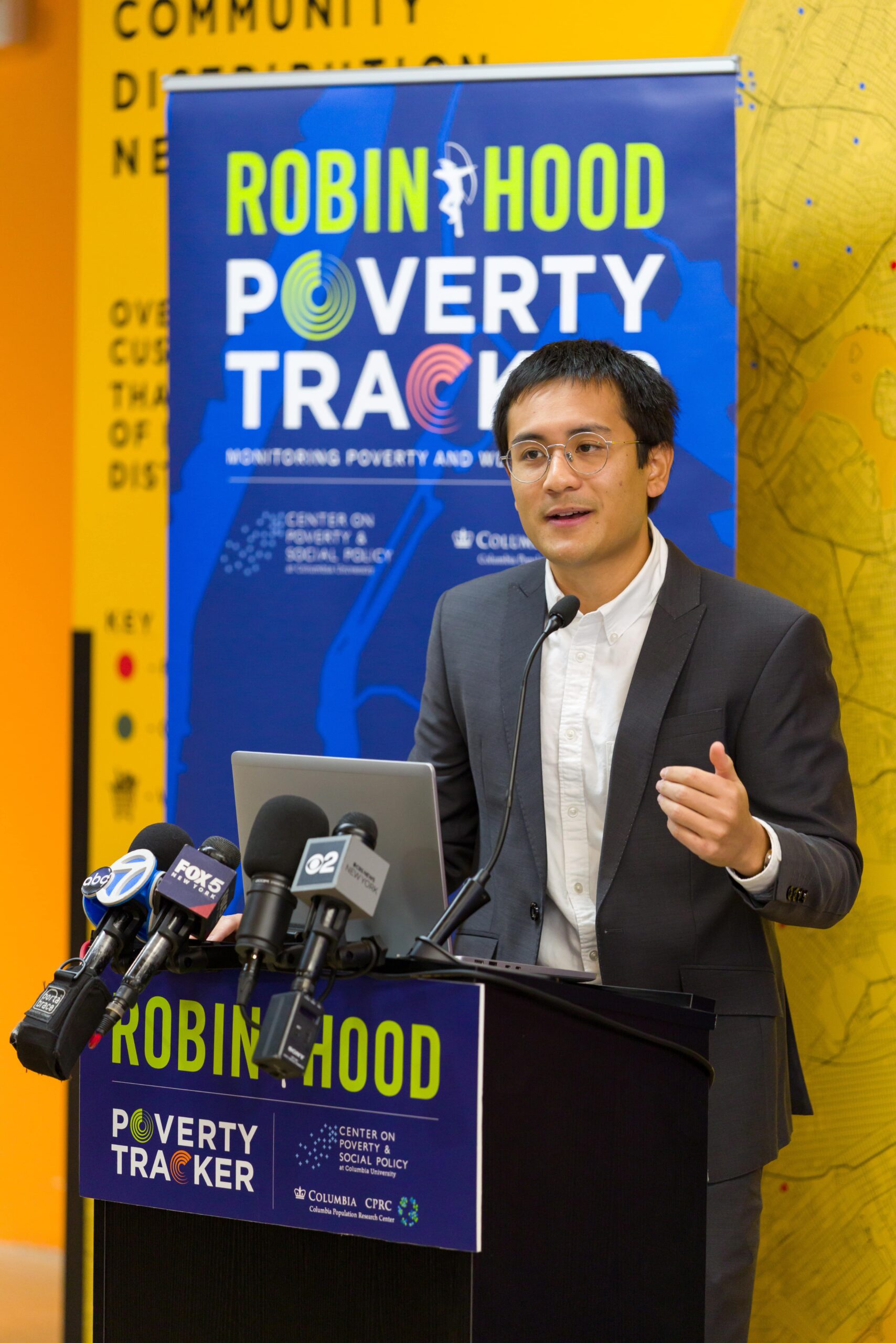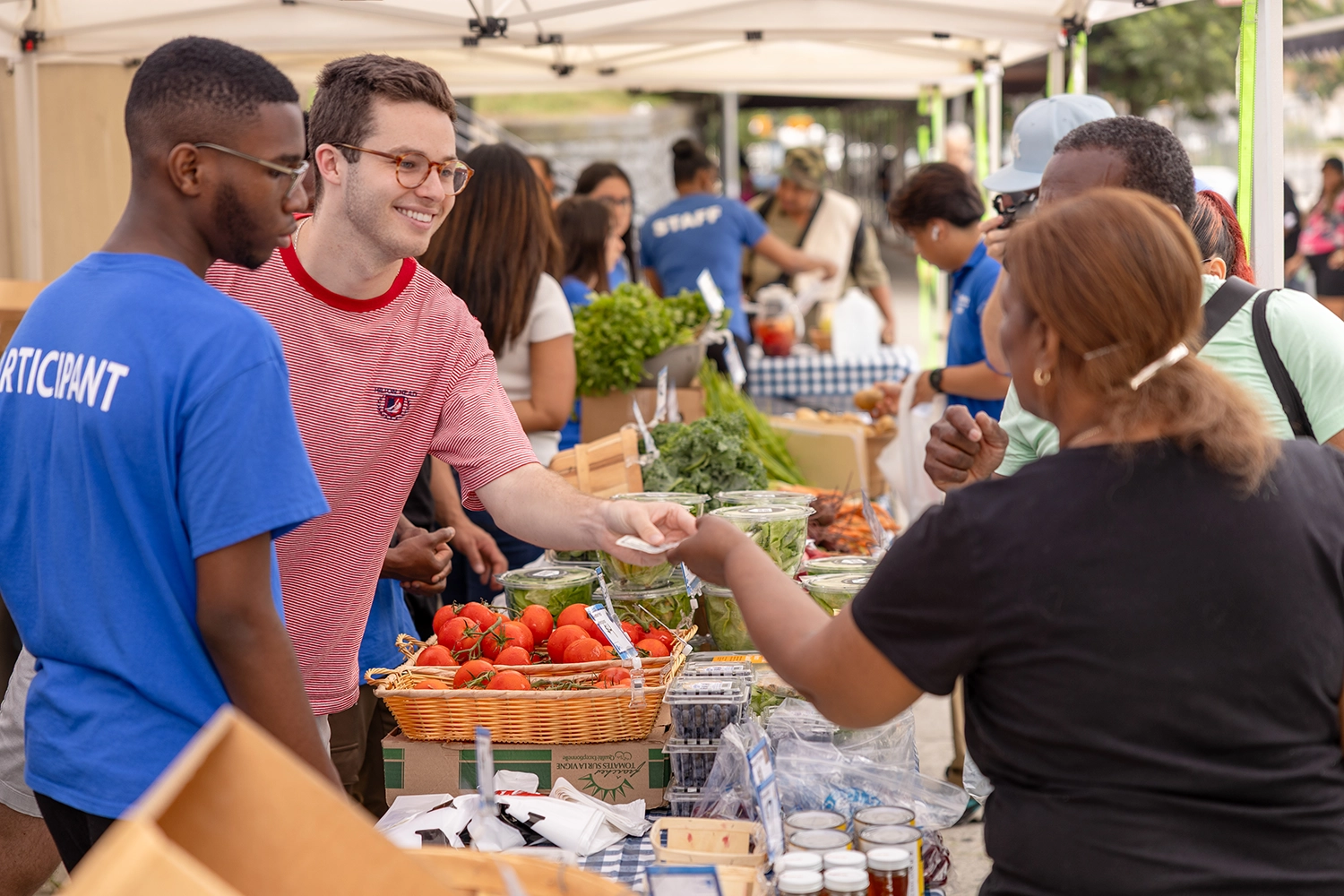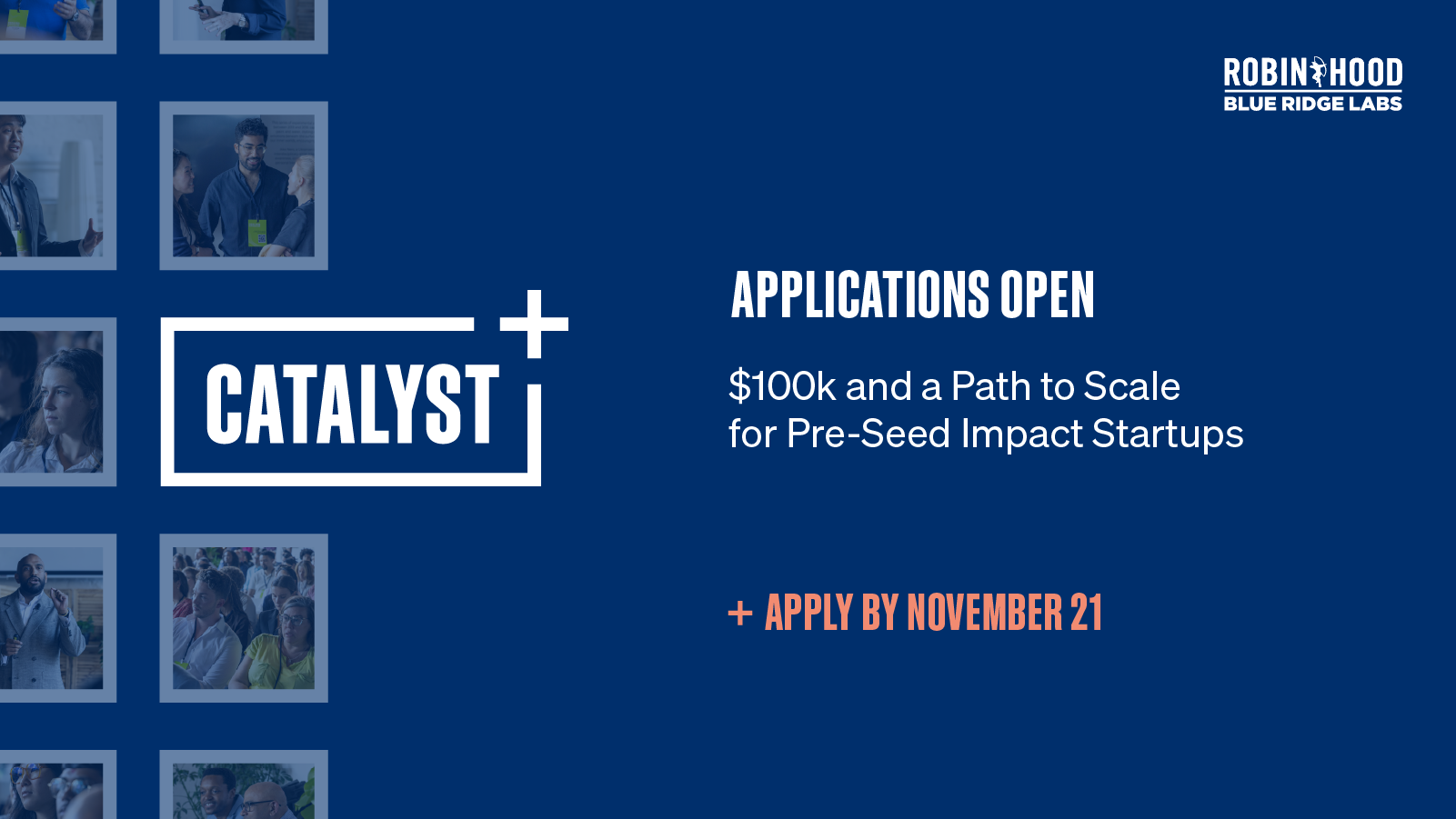Nov 18, 2025 Press Release
Amid Widespread Food Hardship, Robin Hood Ramps Up Emergency Food Grantmaking in Q4 2025, Releases New Data
A new Poverty Tracker report finds more than 40% of NYC families with children can't afford weekly food costs, falling short $205 per week
NEW YORK – Today, Robin Hood, New York City’s largest poverty-fighting philanthropy, announced a 50% increase in grantmaking to address widespread challenges New Yorkers continue to face in putting food on their tables as grocery prices escalate. The announcement comes as Robin Hood and the Columbia University Center on Poverty and Social Policy release its annual food hardship report, Spotlight on Food Budget Shortfalls in New York City, showing that more than one in three adult New Yorkers (36%) and more than 40% of families with children (42%) reported needing more money to meet their household food needs in recent years, both substantial increases over pre-pandemic period when rates stood at 29% and 34% respectively.
The one-time funding increase represents a total investment of $4.6 million for emergency food services in 2025, expanding food access citywide through ten trusted grantee community partners: City Harvest, Food Bank for NYC, New York Common Pantry, Part of the Solution, Project Hospitality, River Fund, Sharing Excess, St. John’s Bread & Life, The Campaign Against Hunger, and West Side Campaign Against Hunger. This funding enables the delivery of more than 5.8 million meals to families in need across all five boroughs.
“When SNAP benefits lapsed during the recent historic federal government shutdown, it exposed just how fragile the safety net is for New Yorkers in need. Our Poverty Tracker Report confirms that this fragility is no longer limited to the poorest New Yorkers—it has spread across economic levels now impacting a third of all New Yorkers,” said Richard R. Buery, Jr., CEO of Robin Hood, New York City’s largest poverty-fighting philanthropy. “No working family should go hungry in New York City. When nearly 90% of families struggling to afford food have a working adult in the household, we’re not just facing a hunger crisis—we’re facing a crisis of dignity. Nearly 440,000 additional adult New Yorkers and more than 70,000 additional families with children are experiencing food budget shortfalls compared to pre-pandemic levels. Yet, their earnings cannot keep pace with the rising cost of groceries. This is a call to action for all of us.”
The 2025 Poverty Tracker Spotlight Report examines how New Yorkers’ ability to afford food has been impacted by rising prices, with food costs in the New York City metro area increasing by 33% over the last ten years. The report finds that food budget shortfalls are affecting New Yorkers across the income distribution, including those well above the poverty line. Among families with children facing food budget shortfalls, the average amount of additional money needed per week has increased from $171 pre-pandemic to $205 in recent years.
The findings reveal that food insecurity is not limited to those living in poverty. The share of adults experiencing food budget shortfalls increased across all income groups, including a jump from 13% to 20% among adult New Yorkers earning above 300% of the poverty line. For families with children living below 200% of the poverty line, food budget shortfalls increased to 47%, while families above 200% of the poverty line saw rates rise from 25% to 34%.
“The data confirms that we are in the midst of an affordability crisis where New Yorkers even well above the poverty line are increasingly struggling to afford food,” said Ryan Vinh, a research analyst at Columbia University’s Center on Poverty and Social Policy and one of the authors of the report. “However, it’s important to note that this crisis already existed for many New Yorkers even before the rapid rise in food prices. In the decade that we’ve been tracking and studying poverty in New York City, our data has consistently shown that around one in three New Yorkers struggle every year to meet their food needs, and rising prices are now stretching their budgets even thinner.”
Additional Findings from Robin Hood and Columbia Spotlight on Food Budget Shortfalls:
- Food hardship remains widespread: In 2024, about 1 in 3 New Yorkers (translating to more than 2.6 million people) reported experiencing food hardship, while nearly 550,000 people experienced severe food hardship, often running out of food or worrying that food will run out.
- Pantry use remains elevated: 14% of New Yorkers (nearly 1.2 million people) reported using a food pantry in 2024, with usage remaining higher than the pre-pandemic period.
- Racial disparities persist: Communities of color, immigrants, and female New Yorkers face significantly higher rates of food budget shortfall. In recent years, 48% of Latino New Yorkers, 41% of Black New Yorkers, 45% of foreign-born New Yorkers, and 38% of female New Yorkers experienced food budget shortfalls, compared to just 21% of white New Yorkers and 33% of male New Yorkers.
- Geographic disparities persist: Food budget shortfall rates vary significantly by borough, with nearly half of Bronx residents (47%) experiencing shortfalls compared to 31% in Manhattan.
With continued cuts to food assistance programs set to roll out over the coming months and years, the report calls for immediate policy action to prevent a further rise in food hardship. Recommendations include:
- Put more cash in New Yorkers’ pockets by ensuring all eligible families receive federal and state refundable tax credits like the Empire State Child Credit and Earned Income Tax Credit;
- Create a state-funded SNAP benefit to supplement the federal SNAP program;
- Increase funding for food pantries; and expanding community-based SNAP and WIC enrollment programs.
Since 2012, the Poverty Tracker has surveyed a representative sample of 3,000 New York households every three to four months, providing critical information on the dynamics of poverty and other forms of disadvantage in the city while tracking data on employment, assets and debts, and health.
In response to the recent pause of SNAP benefits during the 40-day federal government shutdown, Robin Hood partnered with Propel and GiveDirectly to help fund a $2 million emergency fund that provided immediate relief to the lowest-income New Yorkers who did not receive their monthly food assistance allotment on November 1, 2025.
/
Media Contact
Kevin Thompson, Managing Director of Communications, Robin Hood, press@robinhood.org
